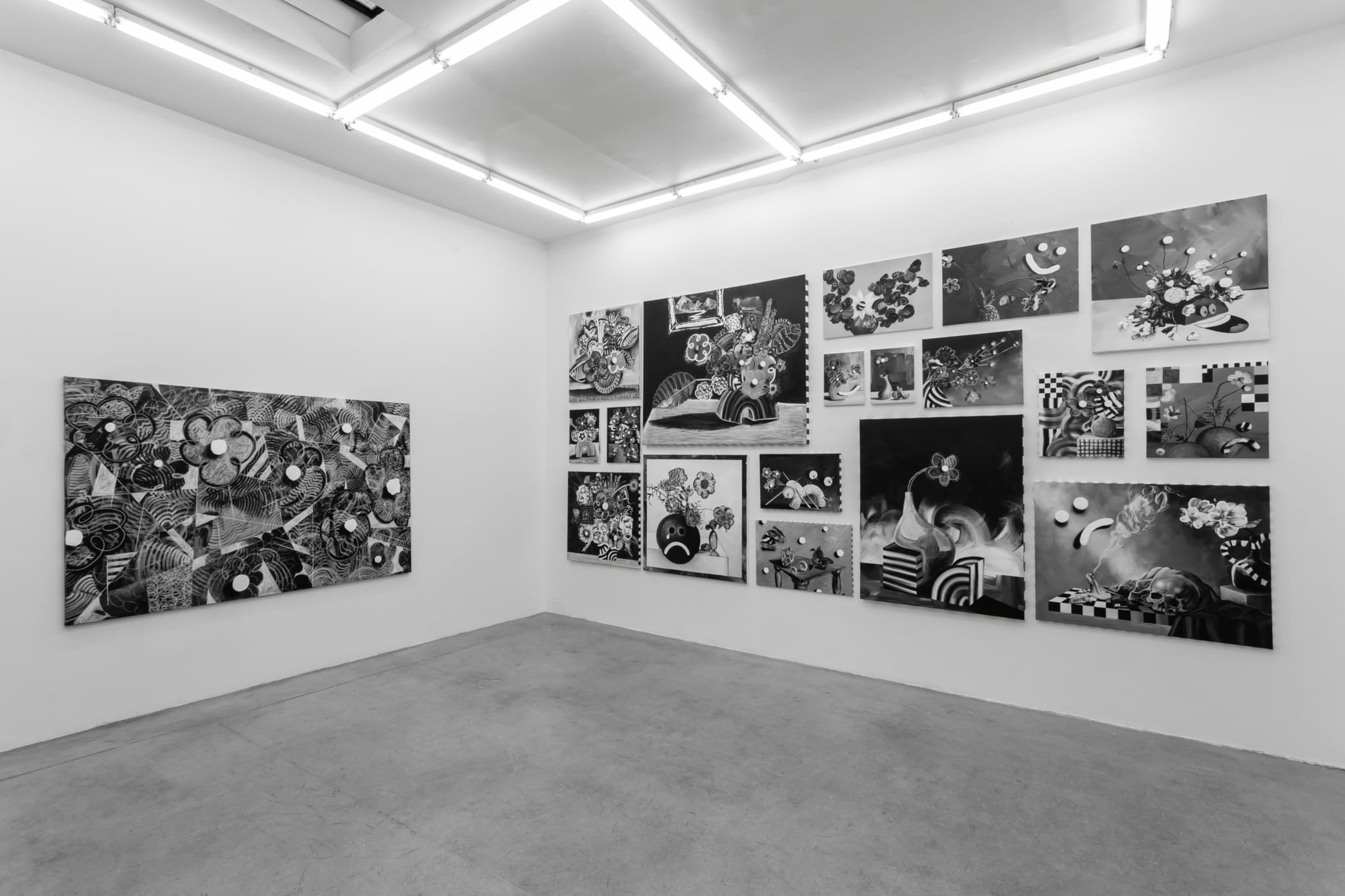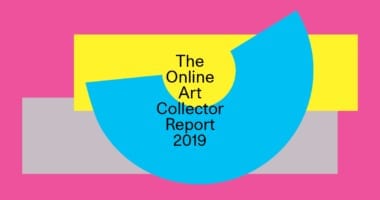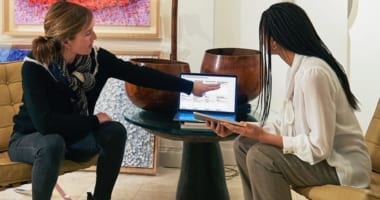
Allison Barker of ABXY and Daniel Faria of Daniel Faria Gallery.
The COVID-19 pandemic has accelerated the art world’s transition online. Galleries and fairs have learned to translate physical exhibitions to virtual spaces and collectors have adjusted to browsing and buying through video walkthroughs and viewing rooms.
But, as the event-filled calendar of the art world’s fall season approaches, what will become the new normal? And, more importantly, how will gallerists across the globe navigate this unknown?
We spoke with two gallerists—Allison Barker, founding director of ABXY, a gallery in New York’s Lower East Side that represents minority emerging artists, and Daniel Faria, founding director of Daniel Faria Gallery, a contemporary art gallery in Toronto—to learn which business solutions they’ve found successful during the pandemic and what they’re doing to prepare their businesses for the fall.
Here’s what they had to say:
1. Revitalize your online presence
Many galleries have incorporated tools such as social media into their digital strategy long before COVID-19 hit. But the closure of brick-and-mortar spaces has forced gallerists to pivot and reimagine what it truly means to “be online.”
Daniel Faria explained that “with everything that’s happened in the past few months, things have started to change…and I started thinking more about our online presence.” Instead of simply having his gallery available in the digital realm, Faria began focusing on what the full experience of an online collector could be and what an online exhibition could provide them.
Faria turned to Artsy to digitally centralize his gallery’s exhibitions and fair presentations, making them both shoppable and easily linkable. One upside? He saw an increase in inquiries during quarantine.
Faria also experimented with virtual walkthroughs when shelter-in-place measures were ordered. “We had installed a new exhibition so I was thinking about the best way to get that out in a more meaningful way other than JPEGs,” Faria said. “So we did a video walkthrough of the exhibition, had the artist narrate and speak about the work, and we shared it on all platforms.”
Finally, he replaced the gallery’s quarterly email newsletter with brief snippets from his represented artists on what they were doing, watching, reading, etc., that he felt “gave a little insight into the artist’s personality, which collectors appreciated.”
“Artsy gives our collectors a place to find our artists, and Artsy has a global audience. That’s really important, especially now when we’re all relying more on digital.”
Allison Barker, ABXY
After temporarily closing the gallery in March, Allison Barker of ABXY also used Artsy to replicate existing gallery exhibitions online so the gallery’s collector base could experience the art, despite not being able to see it in person. Barker explained, “Artsy gives our collectors a place to find our artists, and Artsy has a global audience and that’s really important especially now when we’re all relying more on digital.”
ABXY also produced virtual openings on Instagram Live and promoted them across social media and email to create an exciting and participatory experience for collectors. Additionally, Barker continued her practice of testing new artists she had yet to host exhibitions for by uploading their works to ABXY’s gallery page on Artsy and seeing how the audience engaged.
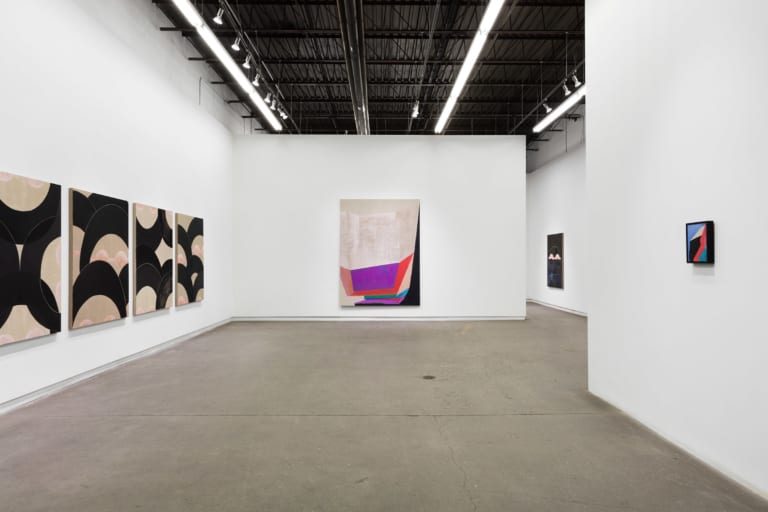
Kristine Moran, Utopias Come in Waves, 2020. Courtesy of Daniel Faria Gallery.
2. Explore new, meaningful ways to connect with collectors
One of the biggest challenges to transitioning from an in-person space to an online gallery is maintaining existing collector relationships and fostering new ones. But with a bit of innovation, both Barker and Faria found creative ways to connect with collectors that resonated with those collectors’ needs.
ABXY—which originally started out of Barker’s apartment—recognizes community as one of its foundational values. Determined not to lose sight of that during the pandemic, Barker began exploring different options to let her collectors experience the art when New York City started its recovery, while also respecting her and her staff’s preference to keep the storefront closed. “It’s not like people come in off the street and buy work, it’s such a client-relationship business,” Barker muses. “My collectors know they can always reach out if they want to come in. So I’ve done some socially distant masked one-on-one studio visits. We’ve also figured out a contact-free way to do it. If I know someone or jump on a call and [get to know them], I give them the code to our lockbox and they can go in and FaceTime me or the artist for a more personalized experience.”
Contrary to Barker, after consulting with his coworkers, Faria decided to partially re-open the gallery in late May with reduced hours and new health and safety measures in place.
“We have public hours at the gallery from 12 p.m. to 5 p.m., which allows time for private appointments in the morning or end of the day.”
Daniel Faira, Daniel Faria Gallery
“We have public hours at the gallery from 12 p.m. to 5 p.m., which allows time for private appointments in the morning or end of the day,” Faria said. Faria opened the space’s garage door to increase air circulation and, as he put it, “make it feel like you’re outside.” Like most other storefronts, Daniel Faria Gallery added hand sanitizer to the front desk and socially distant capacity rules to the space to make sure people were both safe and comfortable. But Faria’s most brilliant idea came with installing a QR code by the front door in place of reading materials typically available at the front desk, like lists of works and press releases. He explained, “The QR code is an easy way for people to scan and have all the information about the work on their phone so they’re just touching their phones and nothing in the gallery.”
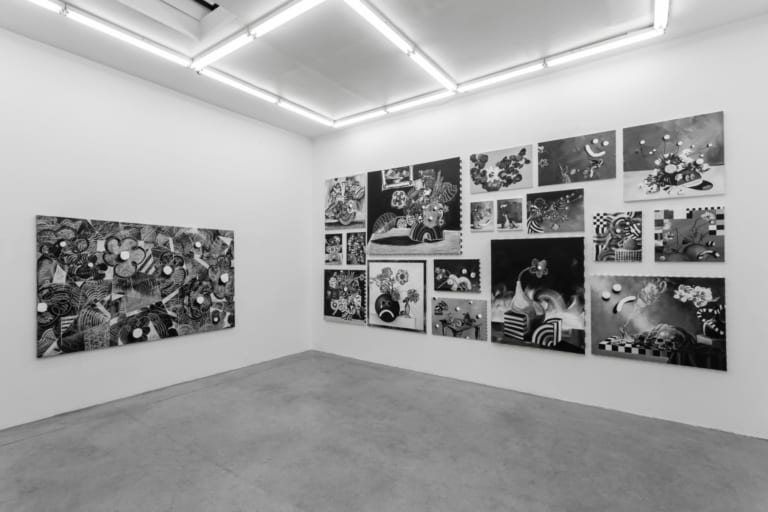
Vernon O'Meally, Flowers for Minnie, 2020. Courtesy of ABXY.
3. Leverage existing art-world partnerships and form new ones
Barker and Faria also took advantage of art fairs that migrated their programming online. Much like Artsy’s ability to expand the galleries’ respective audiences, online art fairs have proved to play an important role in introducing ABXY and Daniel Faria Gallery to collectors, and providing the galleries with opportunities they may not have otherwise encountered.
“I love the virtual shift with fairs. It lowers the barrier for entry so significantly in terms of money, transportation costs, etc. The move to virtual is a really democratizing force.”
Allison Barker, ABXY
“I love the virtual shift with fairs,” said Barker, who exhibited at Intersect Aspen this July, which was ABXY’s first official fair. “It lowers the barrier for entry so significantly in terms of money, transportation costs, etc. The [move to virtual] is a really democratizing force.” The gallery is hoping to follow up with presentations at NADA and Art Basel in Miami Beach in December.
Faria, who’s a veteran in the fair space, is planning things one fair at a time. “We participated in The Armory Show’s new online initiative ‘Armory Access’ [during lockdown],” says Faria. “Every week they would highlight a different exhibition that was currently on at an Armory Show participating gallery. That was amazing because then reached a much broader network and subscriber list so we had lots of interest in the exhibition that came from elsewhere.”
For Daniel Faria Gallery, Artsy has played an important role in many of the gallery’s fair partnerships, including Frieze New York and ARCOlisboa, thanks to our online integration that makes uploading and managing booths easy for Artsy partners. As for upcoming fairs, Faria shared that the gallery is planning to participate in the virtual edition of Art Toronto this fall.
With help from digital tools like Artsy, both Barker and Faria found sustainable solutions that elevate the existing online presence of their galleries, positioning them to succeed in the coming months, regardless of changes that may come their way.
